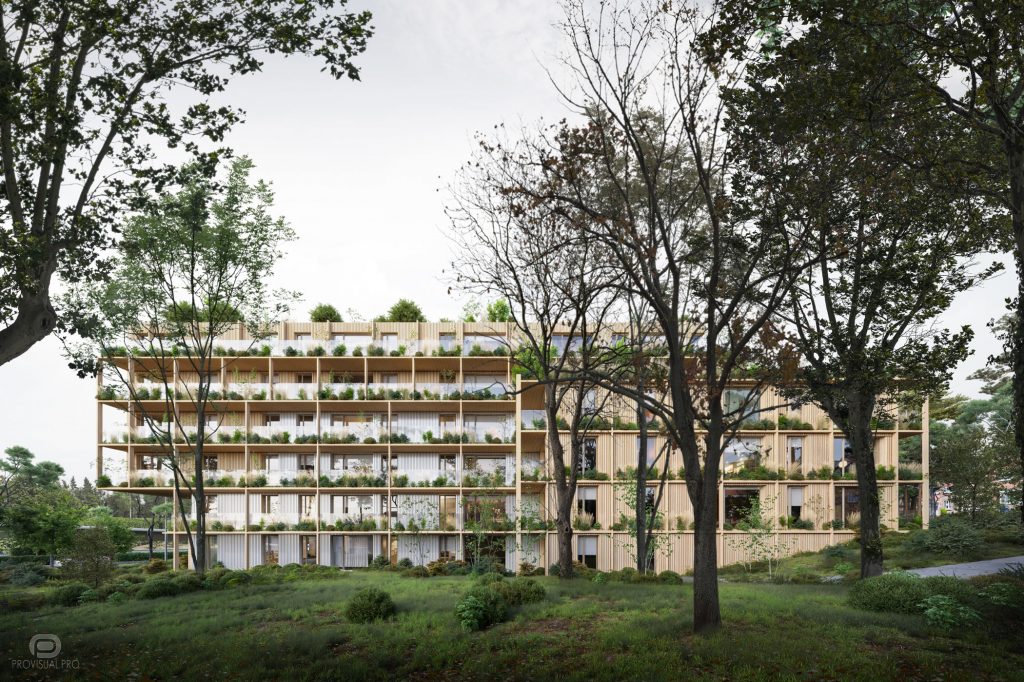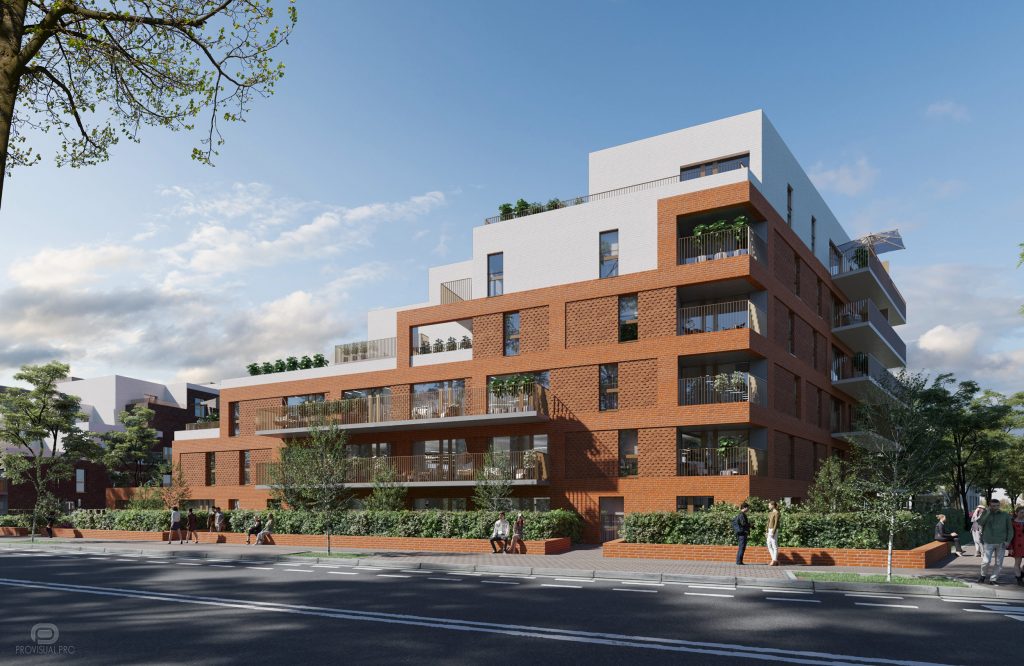How the cost of architectural visualization is formed
September 18, 2024
Architectural visualization plays a crucial role in the design and construction industry, allowing architects, developers, and clients to visualize a project before it is built. Through high-quality renderings, 3D models, and animations, it becomes possible to present designs in a more tangible and realistic way, facilitating better decision-making and communication. As this technology continues to evolve, the demand for professional architectural visualization services grows, making it an essential tool in the field.
However, one of the most frequently asked questions in the industry is: how is the cost of architectural visualization determined? This article aims to provide a comprehensive breakdown of the various factors that influence pricing, helping both clients and professionals understand the true value behind these services. By exploring the key elements that contribute to the cost, we will clarify what drives the investment in high-quality architectural visualization.
Factors influencing the cost of architectural visualization
Scope and complexity of the project
The size and complexity of an architectural project are primary factors in determining the cost of visualization. A simple visualization might involve a single-family home with basic design elements, while a more complex project could entail a multi-story commercial building or a large urban development with intricate details. Larger projects require more time, resources, and expertise to accurately depict, leading to higher costs. For instance, a small-scale residential project might only need basic exterior views, whereas a high-rise office building may involve multiple angles, detailed interior spaces, and complex lighting simulations. The more expansive and intricate the design, the greater the visualization workload, which directly influences the price.
Type of visualization
The type of architectural visualization also plays a key role in determining the cost. There are various visualization methods, including still images, animations, and immersive 3D virtual tours, each with its own pricing structure. Still images are typically the least expensive, as they involve rendering a single viewpoint. Animations, on the other hand, require multiple frames to be rendered and stitched together to create movement, which increases both the time and computing power needed. 3D virtual tours, which allow users to explore a space interactively, are the most resource-intensive and costly due to the high level of detail and interactivity required.
Cost components of architectural visualization
3D modeling costs
3D modeling is a crucial component of architectural visualization, accounting for approximately 40-50% of the overall cost. This process involves creating a digital representation of the project, and its cost is heavily influenced by the complexity of the design and the amount of detail required. The use of advanced techniques, such as parametric modeling for complex facades or procedural generation for large-scale projects, can further increase these costs.
Rendering costs
Rendering, which transforms 3D models into high-quality visual outputs, typically accounts for 30-40% of the overall cost. The price of rendering depends on factors such as the resolution, the number of camera angles, and the complexity of the scene. Factors like realistic lighting, reflections, shadows, and environmental details (e.g., weather effects or moving objects) can significantly increase rendering time, adding to the overall cost. High-end rendering services may involve specialized software and powerful render farms, which increases the cost of the project.
Post-production and edits
Post-production work is essential for refining and enhancing the final visualization, often contributing 10-20% of the total cost. This stage involves adjustments such as color correction, enhancing lighting effects, adding background elements (e.g., people, vehicles, or trees), and fine-tuning textures. For animations, post-production can add an additional 10-20% to the overall cost of the animation, depending on the complexity of the scene and the number of revisions. Revisions based on client feedback are another factor that can increase costs, with minor adjustments involving some costs, while major revisions that require re-rendering parts of the model can lead to additional fees.
Pricing models and structures
Fixed pricing vs. hourly rates
When it comes to architectural visualization, pricing models can vary between fixed rates and hourly charges. Fixed pricing is a predetermined cost for the entire project, often used for projects with clearly defined scopes. Fixed pricing benefits clients by providing cost predictability and clear deliverables, especially for straightforward projects with no expected scope changes. However, if the project expands or requires extensive revisions, fixed pricing may not cover additional work, leading to extra fees.
On the other hand, hourly rates can vary depending on the complexity of the work and the expertise of the visualizer. This model is often used for projects where the scope may change or where the client needs ongoing adjustments and revisions. The advantage of hourly rates is flexibility, particularly when the project requires iterative feedback. However, the downside is that costs can be harder to predict, and if the project becomes more time-consuming than anticipated, the final cost may exceed initial expectations
Pros and cons of each pricing model
Fixed pricing:
- Pros: Predictable costs, easier budgeting, clear deliverables.
- Cons: Less flexibility for revisions, possible extra charges for changes.
Hourly rates:
- Pros: Flexibility for revisions, suitable for evolving projects, pay only for time spent.
- Cons: Unpredictable final costs, may become expensive with extensive revisions.
Package deals and bundles
Many architectural visualization firms offer package deals or bundled services, which combine various types of visualization (e.g., still images, animations, floor plans) at a reduced rate. Some packages also bundle services like post-production editing, additional views, or multiple project angles, providing better value for clients who need a comprehensive visualization.
The benefits of package deals include cost savings and a more streamlined process, as clients can secure multiple services under one agreement. These bundles are ideal for projects that require both interior and exterior visualizations, animations, and virtual tours, offering a cohesive approach at a discounted rate. Clients save time and money by purchasing a bundle, while ensuring consistency in the quality and style of all visualizations.
Additional costs to consider
Revisions and updates
Revisions and updates are common in architectural visualization projects, often resulting from client feedback or changes in design. Minor revisions, such as adjusting lighting or correcting textures, usually incur smaller fees. However, major revisions that involve reworking 3D models or re-rendering large parts of the project can cost significantly more.
To manage revision costs, it is crucial to clearly define the project’s scope and expectations at the outset. Many firms offer a limited number of revisions within their fixed pricing or package deals (e.g., two rounds of revisions included), with additional changes billed separately. Clients can minimize extra costs by providing clear and detailed feedback early in the process, ensuring that significant updates are requested during the initial stages rather than after rendering.
Strategies for managing revision costs:
- Define Scope Early. Clearly outline the project’s goals, styles, and deliverables at the start.
- Limit Revisions. Agree on a fixed number of revision rounds with the firm to avoid excessive changes.
- Consolidate Feedback. Provide consolidated, clear feedback to reduce the need for multiple revision rounds.
- Track Changes. Keep track of changes made, ensuring that all necessary adjustments are covered early on, rather than during final stages when updates are more costly.
Conclusion
In summary, the cost of architectural visualization is influenced by several key factors, including the scope and complexity of the project, the level of detail required, the type of visualization, and additional costs such as revisions and post-production. The pricing structure can vary depending on whether a fixed price or hourly rate is used, and clients can often benefit from package deals or bundled services for a more cost-effective solution.
To effectively budget for architectural visualization, it is important to:
- Clearly define the scope and objectives of the project from the outset.
- Understand the cost implications of different types of visualizations, such as still images, animations, and virtual tours.
- Manage revision costs by providing clear and timely feedback during the early stages of the project.
- Consider opting for package deals if multiple visualizations or complex outputs are required.
By carefully planning and setting realistic expectations, clients can ensure they receive high-quality visualizations that align with their budget, while architects and visualization professionals can deliver impactful results without exceeding cost limitations.

